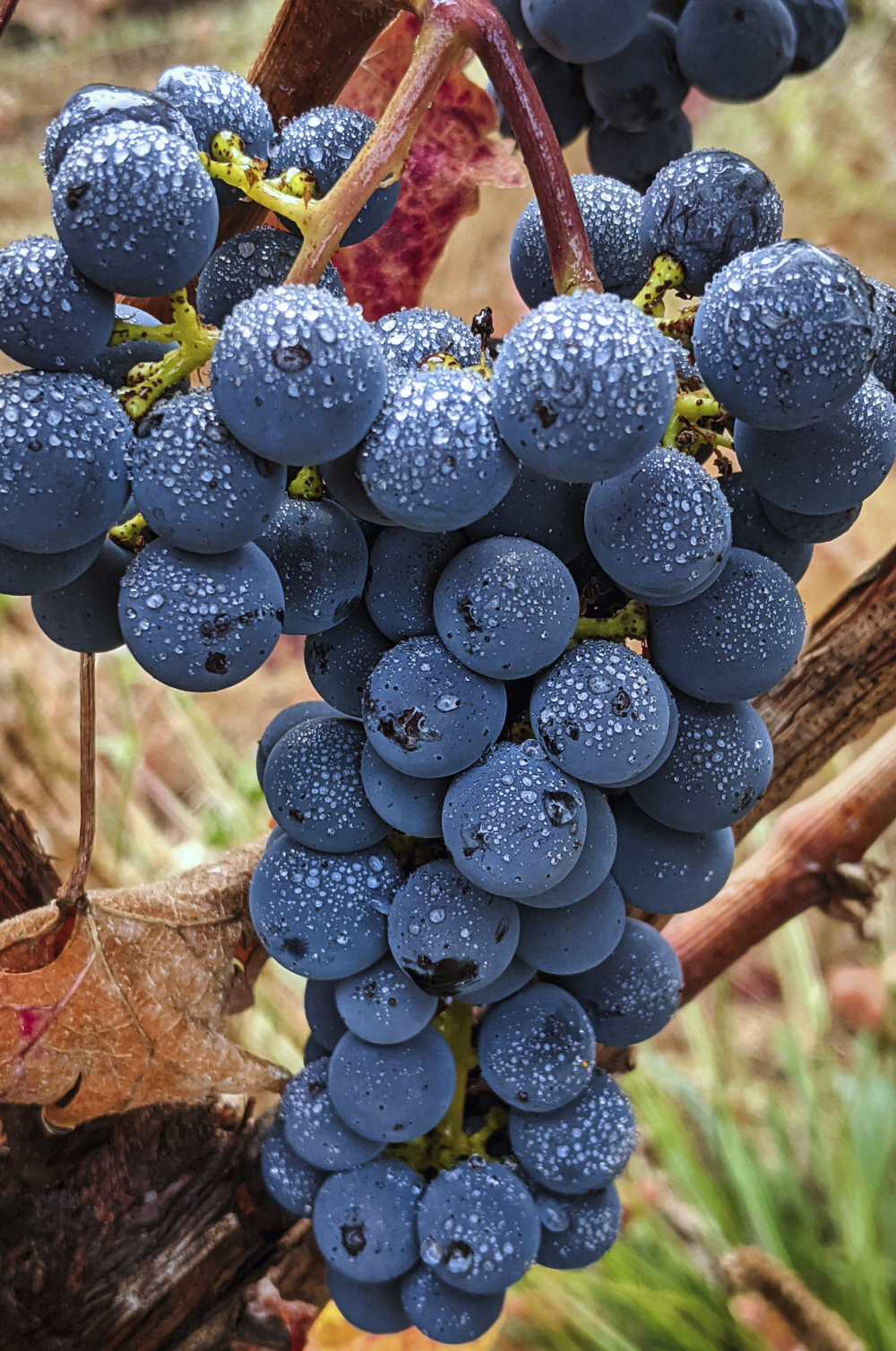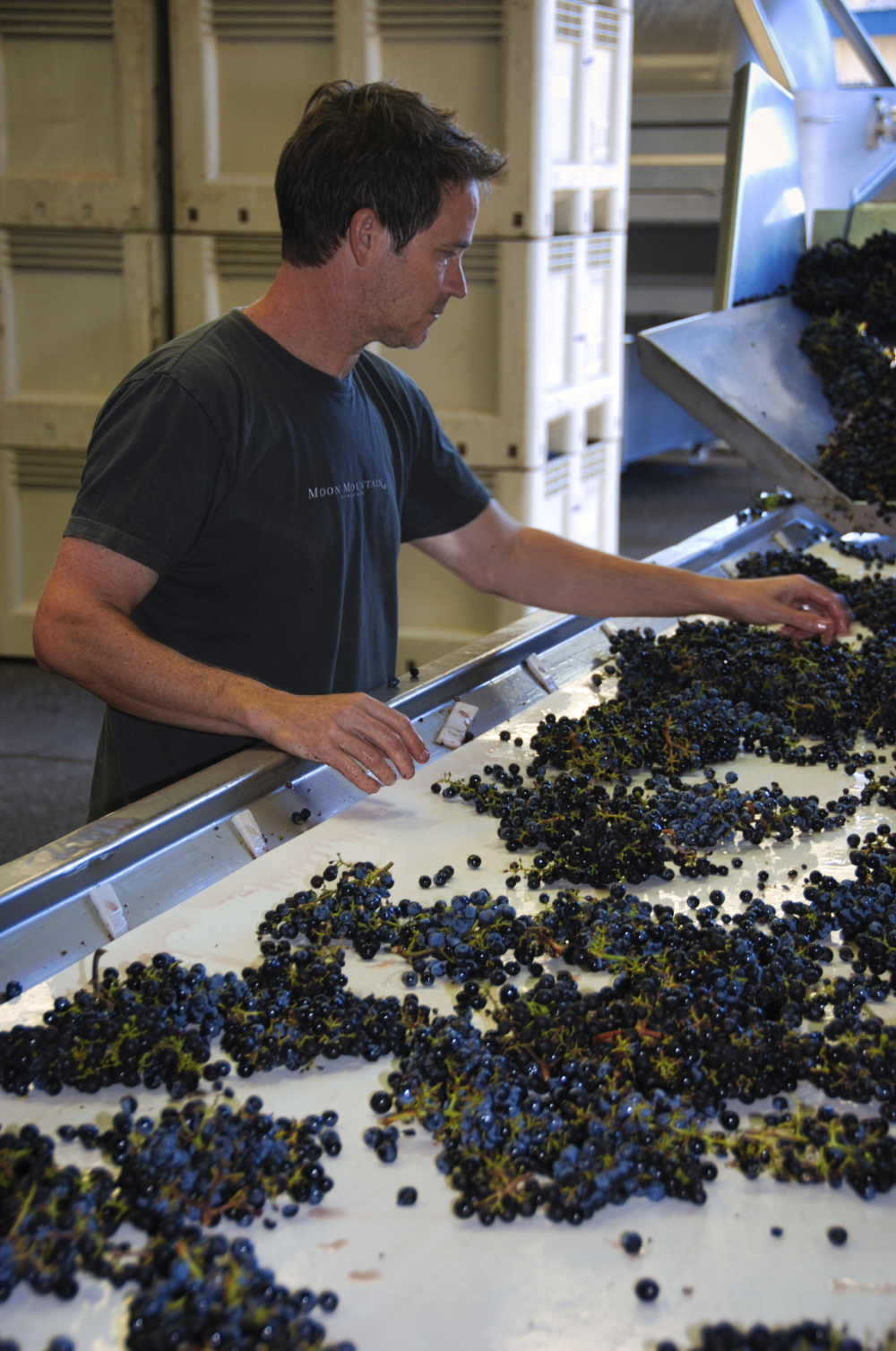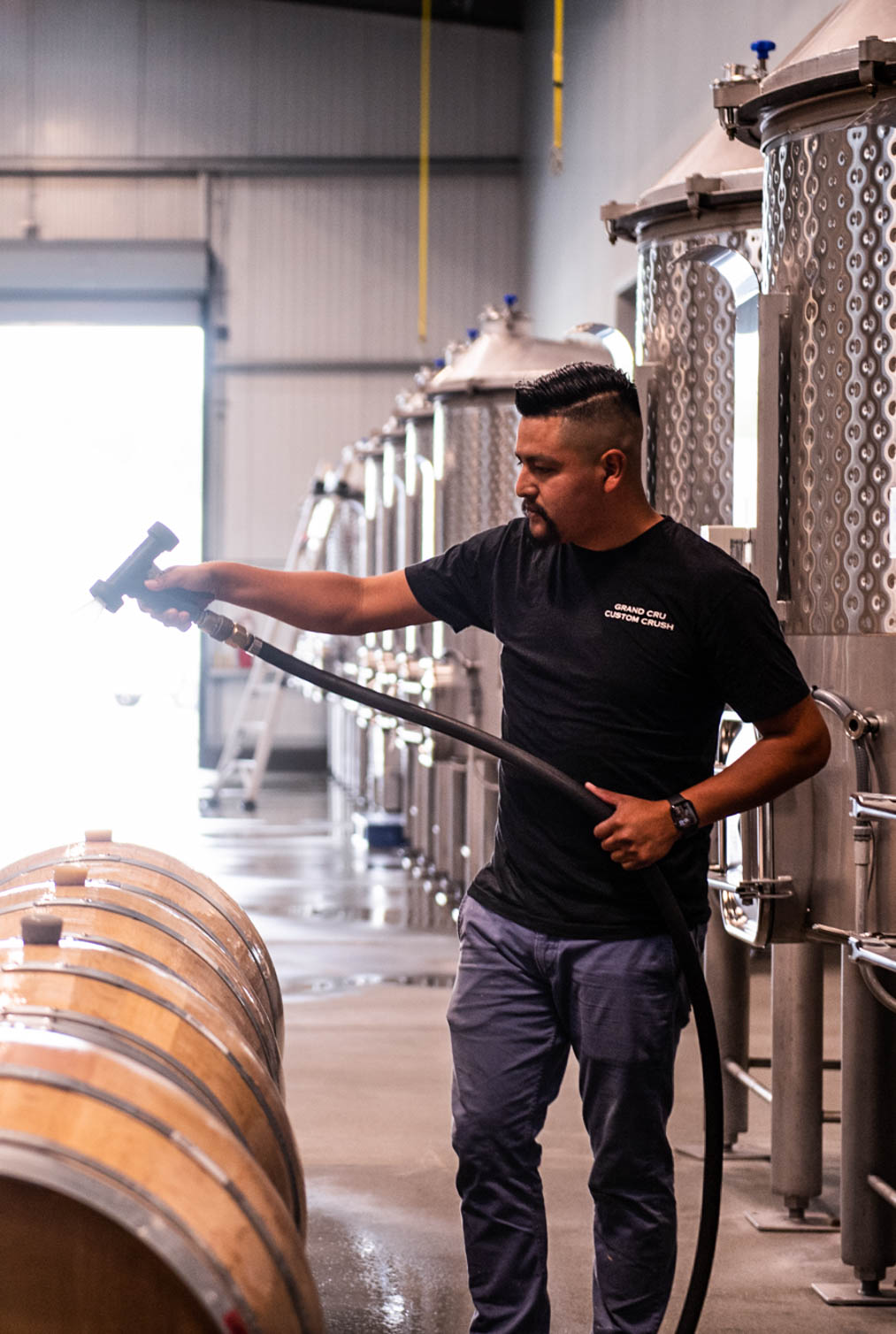Our Winemaking Philosophy
We strive to make a structured mountain wine that is also supple, intense, fragrant and balanced.
From the beginning, Laurel Glen Vineyard has been made with minimal handling, using gravity flow whenever possible, and keeping all lots separate. Over time, through long years and many vintages, we think we have achieved a level of quality and consistency that places our wines among the best that California has to offer.



Fermentation
Starting in 2011, we improved the grape cluster sorting and destemming process. The hand picked Cabernet Sauvignon fruit is sorted twice on sorting tables both before and after destemming with an Armbruster Rotovib. The Rotovib is the latest development in quality destemmers, designed to provide the gentlest handling and yield the maximum number of whole berries and a minimum of stems.
The uncrushed whole berries are then delivered to fermentation tanks without the use of pumps. We use 5 ton stainless steel, glycol cooled, open-top tanks for fermentation. Commercial yeast is normally not added. We believe that the yeast that naturally occurs on the grapes and native winery flora provide more complexity to the finished wine. We use a combination of punching down and gentle irrigations of the cap to extract color and tannin from the skins throughout fermentation.
The wine is kept on the skins for 9 to 14 days. Fermentation is to dryness, though the time of pressing is determined by taste. Gravity flow and a Europress bladder press are used to separate the juice from the skins.

Aging
After pressing off the skins, malolactic fermentation proceeds naturally in barrel over the course of the next couple of months. Upon completion of malolactic, the wine is racked for the first time and will be racked in total three times over two years of barrel aging. Racking introduces oxygen, which helps to develop the tannins in the aging process.
Immediately after fermentation, we usually have 10 lots of Cabernet Sauvignon from individual vineyard blocks that were harvested and fermented separately to retain the nuances of each block location. These lots are evaluated over the next eighteen months as their nature is revealed and before the final blends are assembled. Lots that are showier and more appealing as young wines are used for Laurel Glen Counterpoint Cabernet Sauvignon; bigger, denser lots that promise age-worthiness are separated out for Laurel Glen Vineyard Estate Cabernet Sauvignon. From these lots, Randall will choose 6 or 7 barrels to become our Lot Series Cabernet Sauvignon: our homage to the more rustic style of the Laurel Glen vintages of the 1990’s. We use exclusively French oak barrels for Laurel Glen Vineyard Cabernets, primarly from the Taransaud Cooperage. For the Estate Cabernet, we use 50 to 60% new oak barrels, for the Lot Series Cabernet, we use 80% new oak barrels and for Counterpoint Cabernet, we use 30% new French and 10% new American oak barrels. All our Cabernets are aged in barrels for 21-22 months before bottling.

